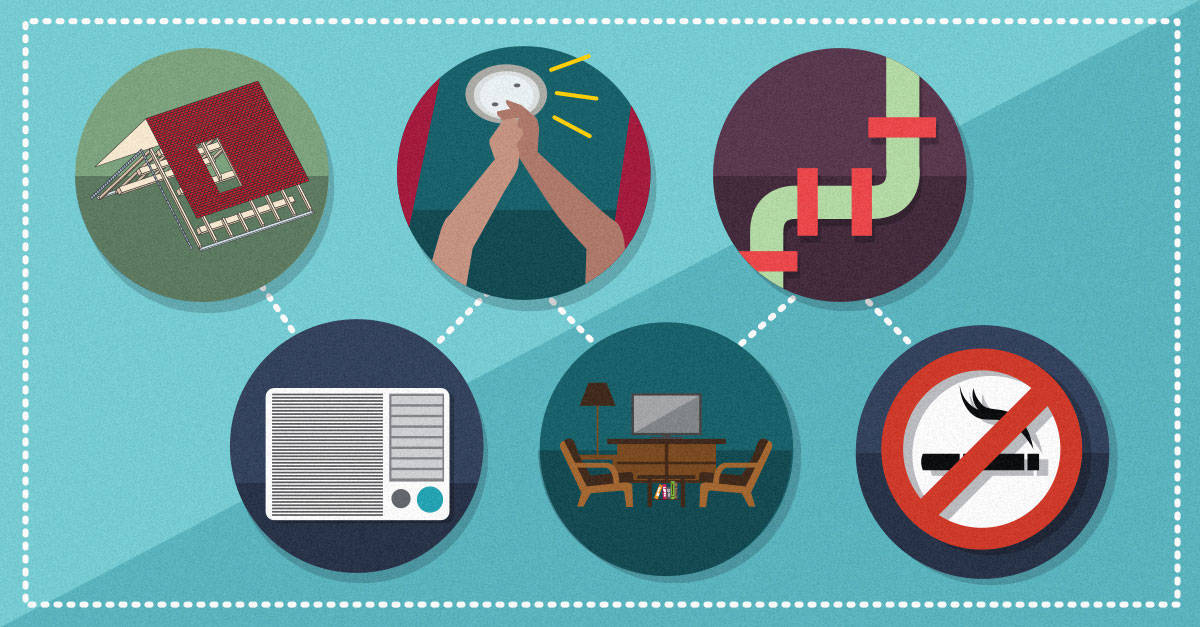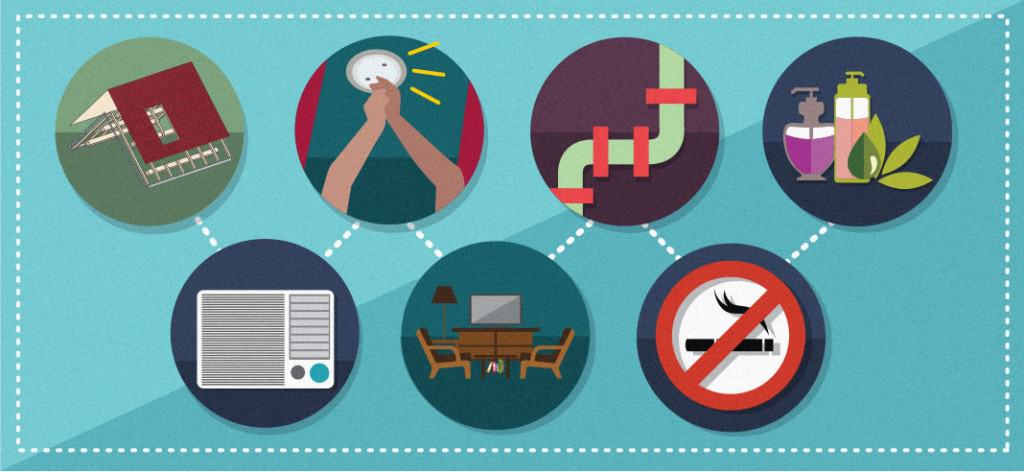 How to Clean Up Your Home’s Air
How to Clean Up Your Home’s Air
More and more attention has been focused on the negative health effects of outdoor air pollution—and that’s a good thing. But while curtailing pollution outside is important, we’re not necessarily safe indoors, either. In fact, any toxins or pollutants released indoors are approximately 1,000 times more likely to be breathed in than anything released outdoors. Nearly three percent of the global burden of disease is attributable to indoor air pollution. Given that many of us spend up to 90 percent of our lives inside, it’s worth investing the energy to keep indoor air clean.
Some of the most common sources of indoor air pollution include gases from cooking and heating, mold and mildew, common household cleaners, and toxins contained in building materials. Read on to learn how to reduce your exposure to these and other indoor toxins.
How to Keep Indoor Air Clean
Vent properly. One of the best ways to protect yourself from indoor pollutants is to vent the stove and fireplace to the outside. Similarly, reduce contaminants in bathrooms and kitchens by utilizing exhaust fans. And be sure to open a window (or two) on a regular basis to allow fresh air to circulate.
Reduce moisture. Rain and humidity outdoors can create moist conditions indoors, causing mold and mildew growth—which can in turn lead to wheezing, coughing, and asthma symptoms. To help keep things dry, check your home’s roof, foundation, and basement annually for leaks or other moisture problems, and fix any issues as soon as possible. Use a dehumidifier if needed (just remember to clean it often).
Keep it clean. Clean out air conditioners, air ducts, humidifiers, dehumidifiers, and furnace filters regularly. Wash bedding in hot water on a consistent basis. Treat any signs of mold or mildew immediately.
Use natural cleaners. Ditch synthetic products and make your own non-toxic cleaners with baking soda, essential oils, and vinegar.
Check for radon. Exposure to radon is the second most common cause of lung cancer and contributes to tens of thousands of deaths per year. Silent and odorless, radon can be found in the soil or bedrock underneath homes and in a variety of building materials. The only way to check for radon is to buy a radon test.
Get a carbon monoxide alarm. Protect yourself from the potentially deadly consequences of carbon monoxide exposure. Install a carbon monoxide detector near the bedrooms in your home and have all fuel-burning appliances inspected by a technician each year.
Watch out for asbestos. Inhaling asbestos fibers can increase the risk of lung cancer and other respiratory illnesses. If you suspect your home contains asbestos (it’s used on pipe coverings, flooring, shingles, and roofs), consult a professional.
Reduce carpeting. Carpets can harbor a number of pollutants and anytime someone walks on the carpeting, those particles can be re-introduced into the air. If you can’t live without carpet, opt for throw rugs that you can wash on a regular basis.
Quit smoking. Tobacco smoke contains hundreds of toxic and carcinogenic compounds, increases the risk of respiratory infections and asthma, and kills up to 50,000 people per year. If at all possible, quit smoking ASAP. And don’t let anyone smoke inside your home.
Ditch the incense and candles. They may smell nice, but incense and most candles (except for those made from beeswax or soy) actually do more harm than good.
Skip the air fresheners. Air fresheners don’t eliminate toxins or pollutants from the air, and they may actually introduce more toxins. Can’t live without them? Make your own by mixing water with essential oils or simmer cinnamon, cloves, and/or your favorite herbs on the stove.
Beware of VOCs. Volatile organic compounds (VOCs) are found in a large number of household products, from carpets to furniture, cosmetics, computers, plastics, and wood finishes. These compounds can cause symptoms including headaches, nausea, rashes, and endocrine disruption. Whenever possible, choose low-VOC paints, varnishes, waxes, and hair and nail products (or skip those products entirely).
Practice good plant care. If they aren’t dusted, many leafy plants can collect allergens—and if soil gets too wet, they can harbor mold. That said, when properly cared for, many houseplants help improve indoor air quality. Just dust plants’ leaves regularly and be sure not to over-water.
Choose CADR. If you decide to purchase an air filtration unit, do some research. Check to be sure it has a clean-air delivery rating (CADR) certification from the Association of Home Appliance Manufacturers, which measures how much pollen, dust, or smoke a given model can remove.
Indoor air pollution can pose serious risks to our health. The good news? A few smart choices can improve the healthiness of our homes.


